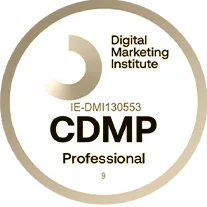
Is it a downturn, or isn’t it? While the current economic situation keeps giving us mixed signals about the near future, most experts still believe that — soft landing or not — we’re about to experience an economic downturn.
It’s a little on the nose for a creative marketing agency to tell you to keep marketing in tough economic times — we’re a little biased, probably. So instead of just padding our search engine content with empty platitudes, we want to give you 5 actionable marketing tips for your business that will help keep you relevant and come out the other side of this thing in better shape.
1. Adjust Audience Targeting
One big challenge for companies during a recession or downturn, is that we have to really go against conventional marketing knowledge. One of the areas this is especially evident is in audience targeting. Right now, it’s not quite as important to target people by their age, hobbies, interests, or gender when creating advertising campaigns.
The bigger question is how people are feeling about the economy right now. Feelings are harder to quantify than hard demographics. For unstable economic times, it’s a good idea to create a new batch of customer personas. We can ask a few questions to come up with these new personas: Who might be feeling most anxious about a recession? Which industries are hit hardest? What types of products are people buying at the precipice of a potential downturn, and what types of products are already seeing the pinch?
Generally, we should be able to classify personas by level of buyer confidence. These different personas will match up with hard demographics, but right now we have to do the investigation to see who lines up where. Younger people who tend to spend their money on experiences more than products will probably be less affected than someone who typically shops a lot.
But, people who normally shop a lot will still be doing their research right now to buy later.
2. Make Messaging Adjustments
Even if the ad budget in your organization takes a hit, there’s plenty that can be done to keep your brand relevant. People who typically shop a lot, and might be worried about spending extra money, won’t suddenly stop browsing for things they like and doing research. Businesses who stop marketing altogether won’t be able to stay top-of-mind anymore; there is an excellent opportunity to get noticed as other companies abandon their marketing plans.
Shifting from conversion-based messaging to awareness and interest campaigns makes sense. Take the time to give people more in-depth information about your company, its people and details and benefits on products and services that you might not normally get into when drawing people into the top of your sales funnel.
This in-depth content should already exist somewhere already, but it’s a good chance to get some of that interesting, in-depth, late-funnel content to your newer followers. Repeatedly hitting the top of the funnel with content that’s normally reserved for later stages will make potential customers feel more comfortable when the recession eases and it’s time to start buying again.
Plus, trust-building content is useful in any phase of the customer journey.
3. Focus on Building Trust
For consumers who lean towards the anxious side of the new persona spectrum we’re creating, there’s likely a lot of comfort in going about business as usual. But since many of these customers are not actively buying right now, content should be adjusted to show the more human side of your business and remind everyone that — yes, we’re a business and trying to make money — but we’re also people with jobs, worries, insight and empathy.
The beauty of trust-building content is that you don’t have to worry about diluting your overall marketing for the less for other personas. Even in peak spending mode, your potential clients want to know who’s behind their products and services, that they’re real and human, and that they can trust they’re buying into something made from good intentions.
Highlight the fact that you’ve got families, pets, dreams, hobbies, hopes and fears. There’s good social marketing content here; behind-the-scenes, working hard and coming up with new ideas are great things to showcase right now.
4. Consider New Products and Services
This might be the toughest one to follow. It’s logical to cut spending for new product launches when times are tough. These are huge, time-consuming and expensive projects that generally require the full focus of your whole organization.
But statistically, products launched during a recession not only have a better chance of long-term survival than other products, but they also tend to generate MORE sales than average. When there aren’t as many new products to compete with, people who lean toward the “business as usual” spectrum of our new recession buyer personas will be attracted to anything new and unique.
According to the Harvard Business Review, the best time to launch a product is just after a recession’s mid-point. And even if a new product or service launch isn’t feasible, continuing to put money into research and development is a smart move to stay ahead of other companies who pause everything.
Some organizations have trouble prioritizing marketing and research in hard times, but there’s a compelling case to not go that direction.
5. Consider the Case for increased Spending
In a study of 1,000 U.S. and European businesses during a recession, the companies were split into three categories: Companies who increased their marketing spend, companies who stayed the same, and companies who cut their marketing budgets.
The companies that cut their spending saw a 0.8% drop in market share. The companies that spent the same saw a 0.6% market share increase. The companies that increased their marketing spending saw a 4.3% market share increase!
Since standing out from the crowd with new products and services is always a goal, then spending more money on advertising and marketing in general during a recession makes sense in this regard. But some organizations will still make marketing one of their very first cuts when a recession hits.
Despite the evidence and logic that says otherwise, some companies are still hardwired to regard marketing as a luxury and not a necessity. So if you do have a marketing budget to spend before the end of the year, spend it now! But if you take that marketing spend and make a few adjustments with targeting, messaging and overall approach, that money is going to go a long way to keeping your brand relevant after the unstable economy settles.

